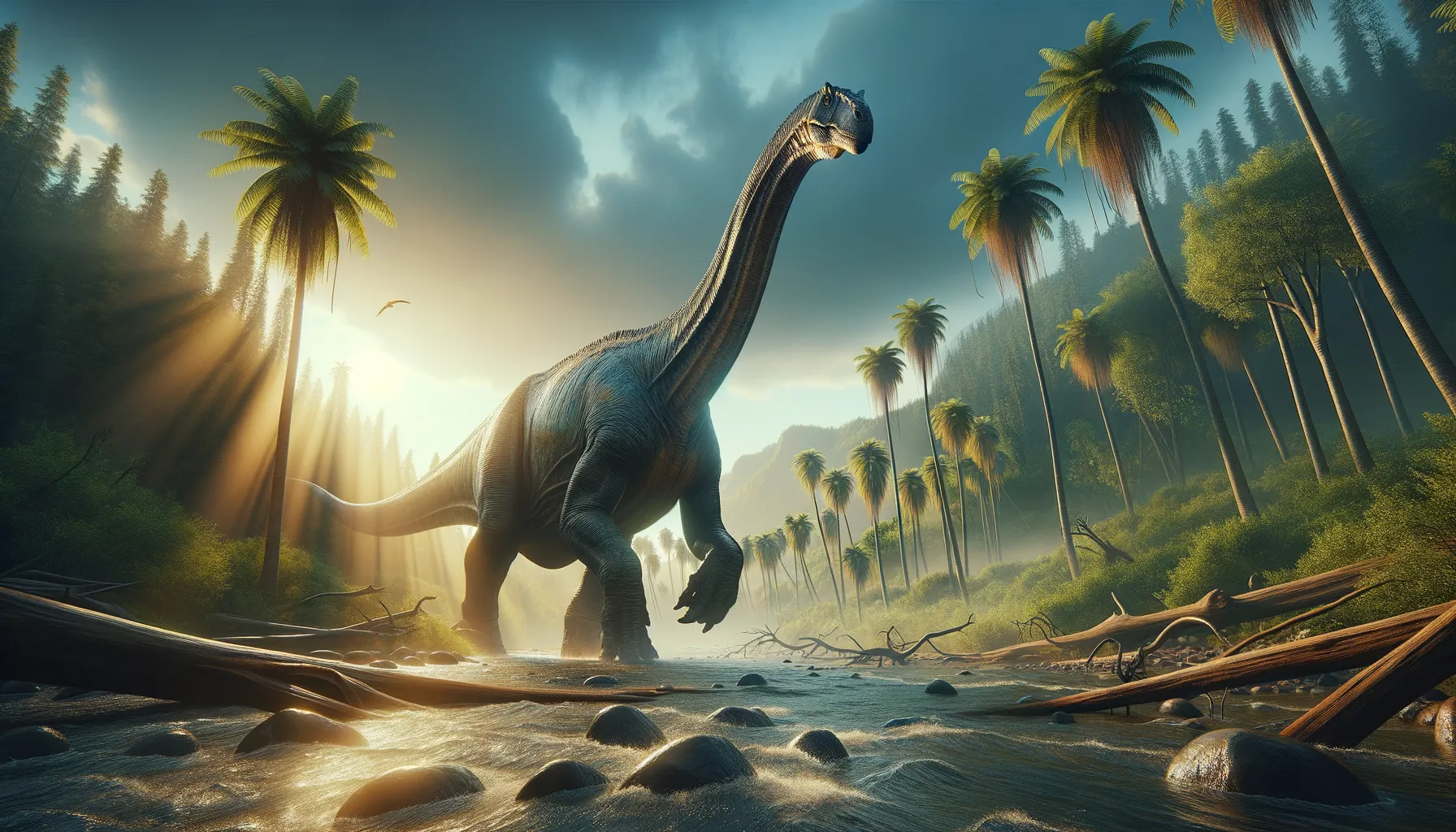
Brontosaurus
Gentle giant of the Jurassic era.
Period
Jurassic
Length
Approximately 70 to 90 feet long.
Height
About 15 feet tall at the hips.
Weight
Estimated up to 17 tons.
Brontosaurus was a massive, long-necked dinosaur that roamed the Earth during the Late Jurassic period. Known for its impressive size and distinctive long tail, this giant herbivore once thrived in what is now North America. Despite its formidable appearance, Brontosaurus lived primarily on vegetation, peacefully grazing in ancient forests and open plains. Its fossil history has been subject to ongoing research, captivating both scientists and the public.
Diet
Brontosaurus was a herbivore, primarily feeding on plants. Its long neck allowed it to reach vegetation high in trees and low on the ground. It likely consumed a variety of ferns, conifers, and other prehistoric flora.
Hunting
As a plant-eater, Brontosaurus did not hunt other animals. Instead, it would have spent much of its time searching for and consuming massive amounts of plant material to sustain its large body.
Environmental challenges
During the Jurassic period, Brontosaurus faced environmental challenges such as fluctuating climates and the availability of water sources. These changes could affect the growth of vegetation, which was crucial for its survival. Additionally, navigating through mixed forested and open areas required strategic movement to access different food sources. Seasonal changes also posed risks, as migrating herds needed to find sustainable and safe habitats.
Speed
Slow-moving, lumbering gait.
Lifespan
Estimated to be around 70 to 80 years.
First discovery
First discovered in the late 19th century.
Fun Facts
- Brontosaurus was believed to be one of the largest animals to have ever walked on Earth, measuring up to 72 feet long.
- The name 'Brontosaurus' means 'thunder lizard', which reflects its enormous size and the impact it might have made when walking.
- For many years, the Brontosaurus was thought to be the same as the Apatosaurus, but recent studies have shown they are indeed separate genera.
- Brontosaurus had a long neck that helped it reach high vegetation, making it a plant-eater or herbivore.
- These dinosaurs lived during the Late Jurassic period, around 150 million years ago.
- Brontosaurus had a whip-like tail that might have been used for communication or defense against predators.
- Despite their immense size, Brontosaurus likely moved in herds for protection and social interaction.
Growth and Development
Brontosaurus experienced rapid growth during its early years, a common trait among large dinosaurs. Its development involved a gradual increase in body size, with particular growth spurts likely during juvenile stages. The dinosaur's skeletal structure adapted over time to support its massive weight and long neck. Like other sauropods, its growth rates slowed once it reached maturity, conserving energy for survival and reproduction.
Habitat
Brontosaurus inhabited lush environments with plenty of vegetation, such as floodplains and open woodlands. It thrived in areas where water sources were readily available, ensuring easier access to food. The rich, diverse foliage of its habitat supported its dietary needs, while the expansive landscapes allowed for easy movement for such a large creature. Its presence in these environments also influenced the ecological dynamics of prehistoric flora and fauna.
Interaction with other species
Brontosaurus interacted with a variety of other dinosaur species within its ecosystem. It coexisted with smaller herbivorous dinosaurs, sharing the rich vegetation available. Occasionally, it might have crossed paths with predators, relying on its massive size as a defense mechanism. Its presence in the environment contributed to the dynamics of prehistoric ecosystems, impacting both vegetation growth and the behavior of other animals sharing its habitat.
Natural lifespan
Brontosaurus could potentially live up to 70 or 80 years.
Reproduction
Brontosaurus likely laid eggs, as do most reptiles. Researchers believe these eggs might have been laid in nests, possibly in communal nesting sites to ensure higher safety. The young were likely independent fairly soon after hatching, relying on their size and herd behavior for protection. These reproductive strategies helped maintain their population despite environmental challenges.
Social behaviour
Brontosaurus may have lived in herds, which provided safety in numbers. Herd behavior allowed for shared knowledge about food sources and enhanced protection against predators. This social structure might have included complex dynamics, such as organized movement patterns and communal care of juveniles. These interactions likely played a crucial role in the survival of Brontosaurus in prehistoric ecosystems.
Fossil locations
Fossils of Brontosaurus have predominantly been found in North America. Significant discoveries were made in places like Utah, Wyoming, and Colorado. These fossil sites have provided valuable insights into the anatomy and growth patterns of this dinosaur. The remnants found in these areas have fueled ongoing research into its life and environment.
